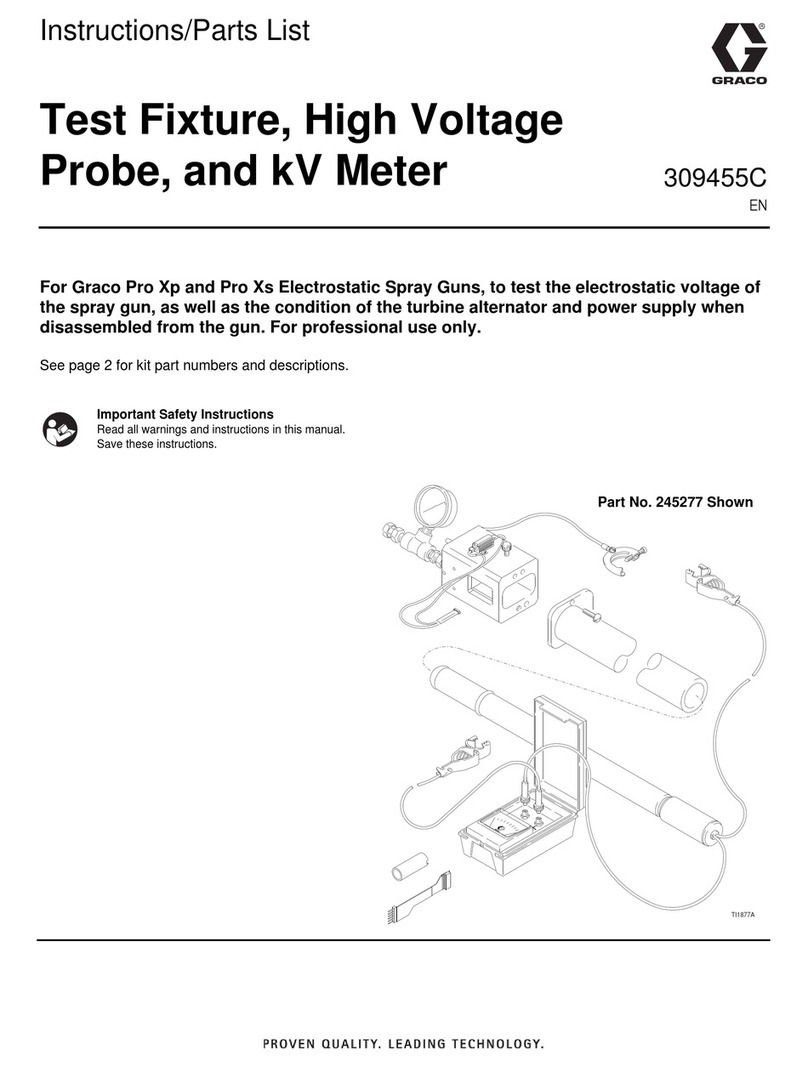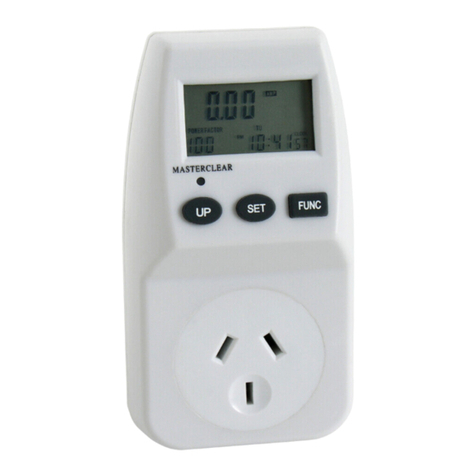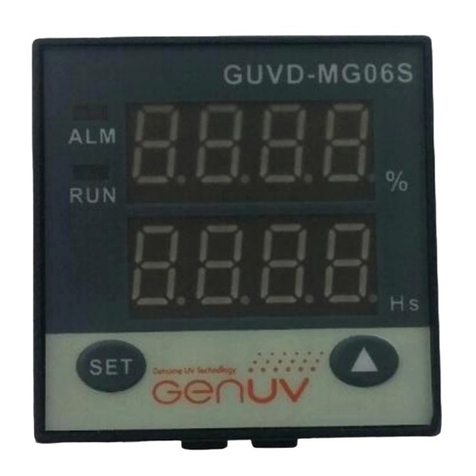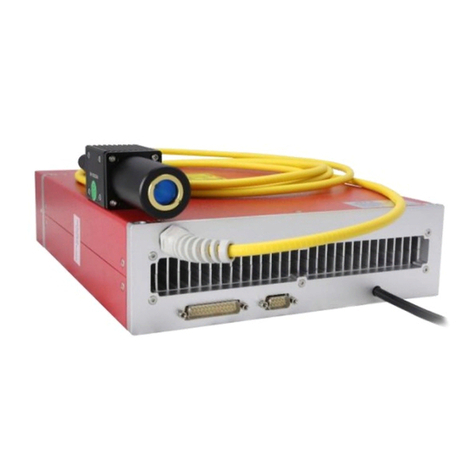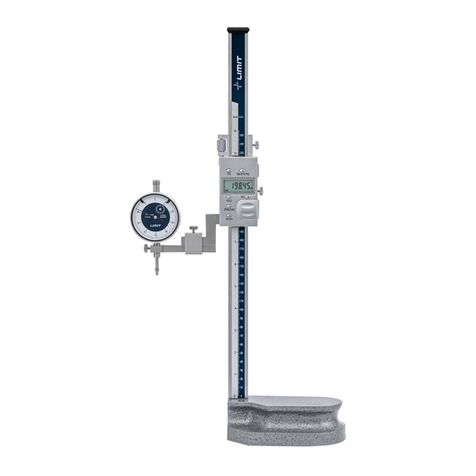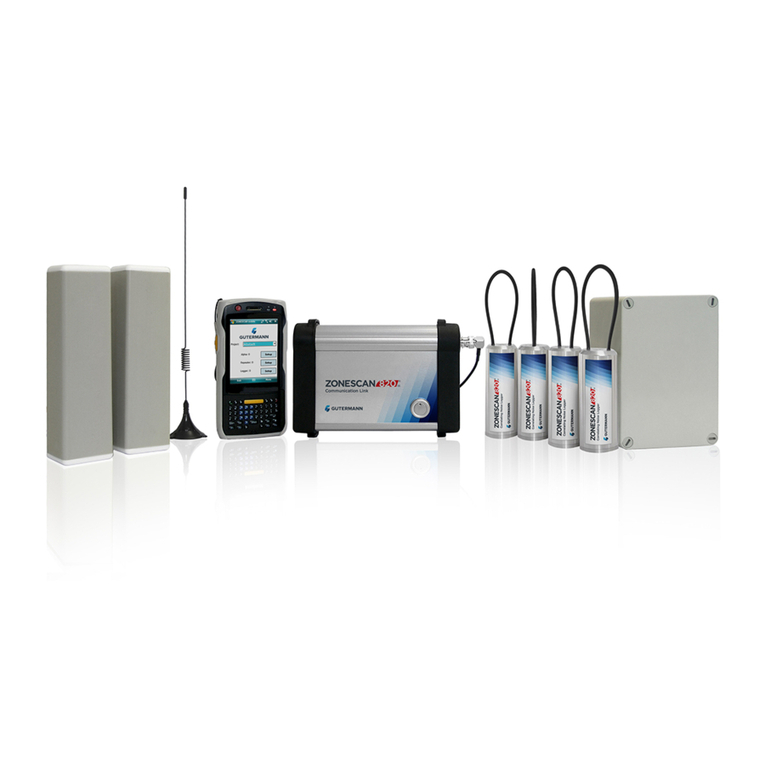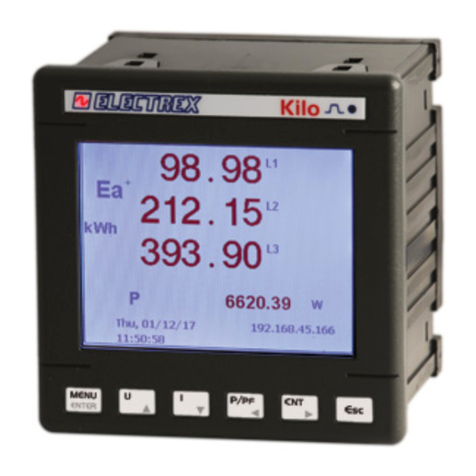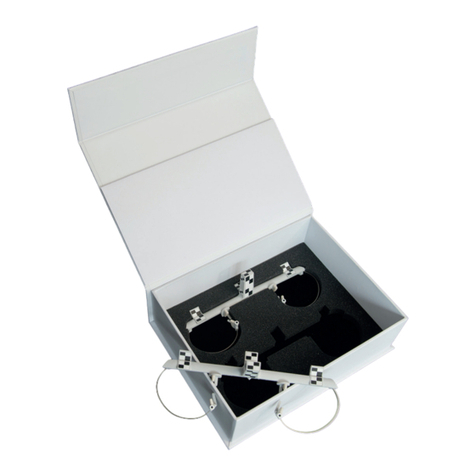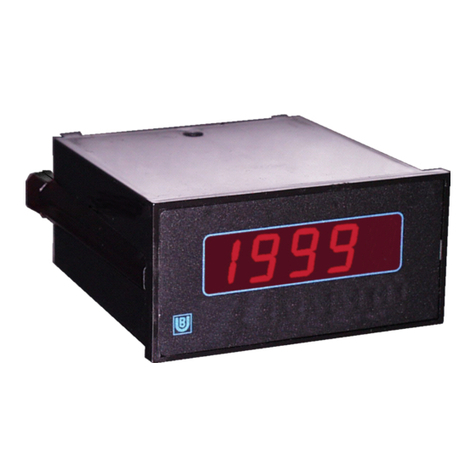Maeraj PHV-20 Operator's manual

INSTRUCTION MANUAL
AND
SAFETY INSTRUCTIONS
FOR
33 kV Portable Voltmeter
and
Double test light
WARNING:
Improper and unsafe use of this device can result in death or serious
bodily injury! This manual contains important information about product safety.
Please read and understand this manual before operating the device. Please
keep this manual available for others before they use the device.

Instruction Manual
Portable HV Voltmeter
and
Double Test Light
Thank you for purchasing this 33kV Portable Voltmeter.
WARNING
• Before using, read these user's manuals of this Portable HV Voltmeter to
ensure correct usage through understanding. After reading, store them in
a safe place for future reference. Incorrect handling of this product could
possibly result in personal injury or physical damage. The manufacturer
assumes no responsibility for any damage caused by mishandling that is
beyond normal usage defined in these manuals of this Portable HV
Voltmeter.
NOTE
• The information in this manual is subject to change without notice.
• The manufacturer assumes no responsibility for any errors that may appear in
this manual.
• The reproduction, transmission, or use of this document or contents is not
permitted without express written authority.

IMPORTANT SAFETY INFORMATION
Safety Warnings and Precautions
WARNING:
Read all safety warnings and all instructions.
Failure to follow the warnings and instructions may result in electric shock, fire, and/or serious injury.
Save all warnings and instructions for future reference.
1. Electrical shock can cause death or injury! NEVER TOUCH exposed conductors of electricity.
2. Inspect the Voltmeter before use. In addition to a general inspection, look specifically for:
a. Pay special attention to the insulation protecting the connectors.
b. Check the probes for exposed metal, damaged insulation, and continuity.
c. Replace damaged probes immediately, before use.
3. Do not use the Voltmeter if:
a. The electrodes (probes) are damaged in any way.
b. The interface cable between the electrodes (probes) is damaged.
c. The outer surface of the electrodes (probes) is grimy.
d. Any abnormal operation is detected. (If in doubt about the condition of the meter, have it
serviced.)
4. Never touch the interface cable between the two electrodes (probes) of the meter.
5. Observe work area conditions. Do not test voltages in damp or wet locations. Don’t expose to
rain. Keep work area clean and well lit.
6. Do not connect the device to HV permanently. (3 minutes max.)
7. Don't work alone - in the event of an emergency another person's presence may be essential.
8. In the event that moisture or water permeates the device, disconnect the device instantly and
contact manufacturer.
9. All safety measures that are obligatory in distribution companies in connection with 33kV
networks must be taken operating the meter
10. The maximum voltage to be connected to the device is 33 kV AC. Higher voltages will cause
damages to the device and put the user`s life at risk.
11. Use caution when working near voltages around 33kV AC. Voltages this high present a risk of
electric shock.
12. Stay alert. Watch what you are doing. Use common sense. Do not operate any meter when
you are tired.

13. Do not operate meter if under the influence of alcohol or drugs. Read warning labels on
prescriptions to determine if your judgment or reflexes are impaired while taking drugs. If there
is any doubt, do not operate the meter.
14. People with pacemakers should consult their physician(s) before use. Electromagnetic fields
in close proximity to heart pacemaker could cause pacemaker interference or pacemaker
failure.
15. Store idle equipment. When not in use, meters must be stored in a dry location to decrease
exposure to moisture. Lock up meters and keep out of reach of children.
16. Dress properly. Protective, electrically nonconductive clothes and nonskid footwear are
recommended when working.
17. Only use accessories intended for use with this meter.
18. The warnings, cautions, and instructions discussed in this instruction manual cannot cover all
possible conditions and situations that may occur. It must be understood by the operator that
common sense and caution are factors which cannot be built into this product, but must be
supplied by the operator.
19. Avoid damaging meter. Use only as specified in this manual.
20. Use the proper settings, terminals, techniques, and range for the tests performed. Start with
the range stated in the instructions.
21. The device must solely be operated by instructed people (in terms of safety and technicalities)
and avoid maintenance in case of any fault.
Read the ENTIRE IMPORTANT SAFETYINFORMATION section at the beginning of this
manual including all text under subheadings therein before set up or use of this
product.
Operating Instructions
( ENT refers to the middle button and means ENTER)
I. Voltage measurement
Firstly, install the Y-shaped probes on the probes; then, do the following steps:
1. Turn the switch on the electrodes (probes) on.
The green LED indicates the machine is turned on.
2. Turn the receiver on. The main menu appears After 5 seconds.

3. Push ENT and enter measurement menu. By connection of the two components, the
green LED starts flashing (handshaking) and “less than 1 kV” will appear in voltage
section.
4. The distance between the transmitter (probe) and the receiver is 21m at most.
5. By connection loss, the green LED stops flashing and voltage number will disappear.
Then “error.com” will appear on the screen. Pushing the ENT (dial), transmitter, and
receiver will connect (if not, turn off the receiver and transmitter for 11 seconds). Time,
date and battery level are also shown on the screen.
6. Connect the electrodes (probes) to the conductor (airline, ground post …). Voltage
amount is shown on the screen
Note: use an elevator for airlines.
II. Double-Phase Measuring
For double-phase measuring, do the following steps:
1. Instead of one of the Y-shaped probes, install the hook on the probe.
2. Use an elevator to get to the place of two airlines that you want to make them parallel
(mind the line confines)
3. Turn both the device and the receiver on.
4. Connect the probe with a hook to a phase of the first line in an appropriate place.
5. Connect the other probe to each of the three phases of the second line sequentially.
6. Whenever the red LED turns on and the device beeps, it indicates that the voltage of the
two phases is not the same. On the contrary, if the red LED DOES NOT turn on and the
device DOES NOT beep it indicates that the voltage of the two phases is similar, thus
the they could be connected.
III.Recording the measured values:
1. To record the measured values, push the ENT to enter recording page.
2. On the recording page, you should firstly enter the location name. The name could be at
most 10 characters long. Push the ENT button to go to the next page. (“<<” indicates
BACK and “:” indicates ENTER)
3. You could enter its name if you work in a post. Also, if the subject is an airline, you could
enter airline as a name. Push the ENT to go to the next page.
4. If the subject in the previous page was post, enter the feeder`s name and if the subject
was an airline enter the base name. Push the ENT to go to the next page.
5. Enter the measured phase. Six options are available by default:
BC –CG –AC –BG –AB –AG
Choose one of the options and push the ENT button. The value will be saved and
“Measure saved” displays.
Note 1: Up to 400 measured value could be saved in the device
Note 2: Clean one of the spaces to be able to save a new value, when the memory is full. (check
the memory regularly and save the data on a computer and keep the device`s memory clean)
Note3: Push the back to go back to the previous page.

IV.Setting time and date
Time and date displays on the screen, so the time will be saved as well when a measured value is
saved.
Setting time:
Go to setup icon on the main page using the dial, and press the ENT to enter. There are two options
on this page:
a. Time and date
b. Data management
Choose “time and date”. On this page, you will see two options:
a. Set time
b. Set date
Choose “set time”. Set the hour by turning the dial, and then press the ENT. Set the minute by
turning the dial. Press the ENT to finish, and press BACK to go back to previous page.
Setting date:
On “time and date” page, choose “set date”. Set the year by turning the dial and press ENT. Do the
same to set the month and day respectively. Then press the ENT to save the date and press BACK
to go back to previous page.
V. Data management and transfer
Enter the setup page. Choose “data management” and press the ENT. There are two options on
this page:
a. View Data
b. Erase data
Install VA software:
Go through the following steps to install the software:
VA software > setup > next > I agree to … > next > c… > next > Install shortcuts …. > next.
After installing the software, connect the receiver to the computer using the cable. Run the software.
Enter “admin” as bot “user name” and “password”. Go to file menu, data then to receive device data
to transfer data.
To display and edit the data, go to file menu, then choose data edit and display option.
See data

On “data management” page, choose “view data” and press ENT. The data of the first
measurement will display on the screen. Scroll down to see the other saved data. The data include
the location –entered at the time of saving, time and date of measurement.
Erase data
On “data management” page choose “erase data” and press the ENT. You will see two options:
a. Erase one
b. Erase all
Choosing “erase one”, you could see the data and select either of them you would like to erase by
pressing the ENT.
Choosing “erase all” and pressing the ENT, erases all the data stored on the device memory.
VI.Transmitter and receiver battery level check
On the main page, choose “battery view” to go to battery level page. There are two options on this
page:
a. TNSR battery
b. RCVR battery
Choose “TNSR battery” to see the transmitter`s battery level in percent. (Transmitter must be on)
Choose “RCVR battery” to see the receiver`s battery level.
Note: an alert will pop up on the screen every 20 sec if the transmitter and receiver battery is low.
Table of contents
Popular Measuring Instrument manuals by other brands

Endress+Hauser
Endress+Hauser Soliwave FDR56 Brief operating instructions
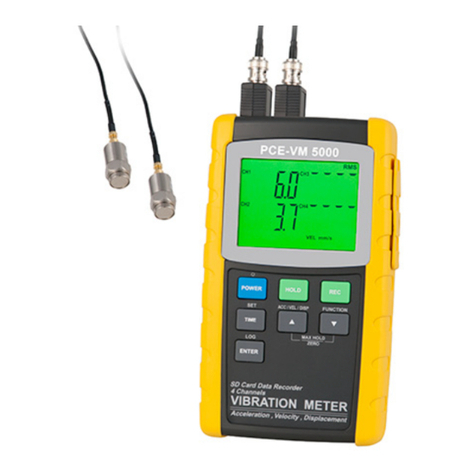
PCE Americas
PCE Americas PCE-VM 5000 Operation manual
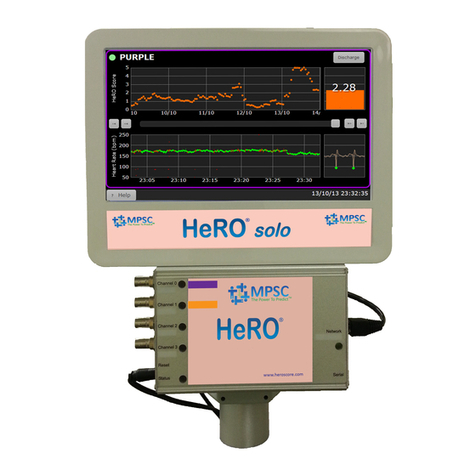
MPSC
MPSC HeRO solo Customer Assembly & Maintenance Procedure
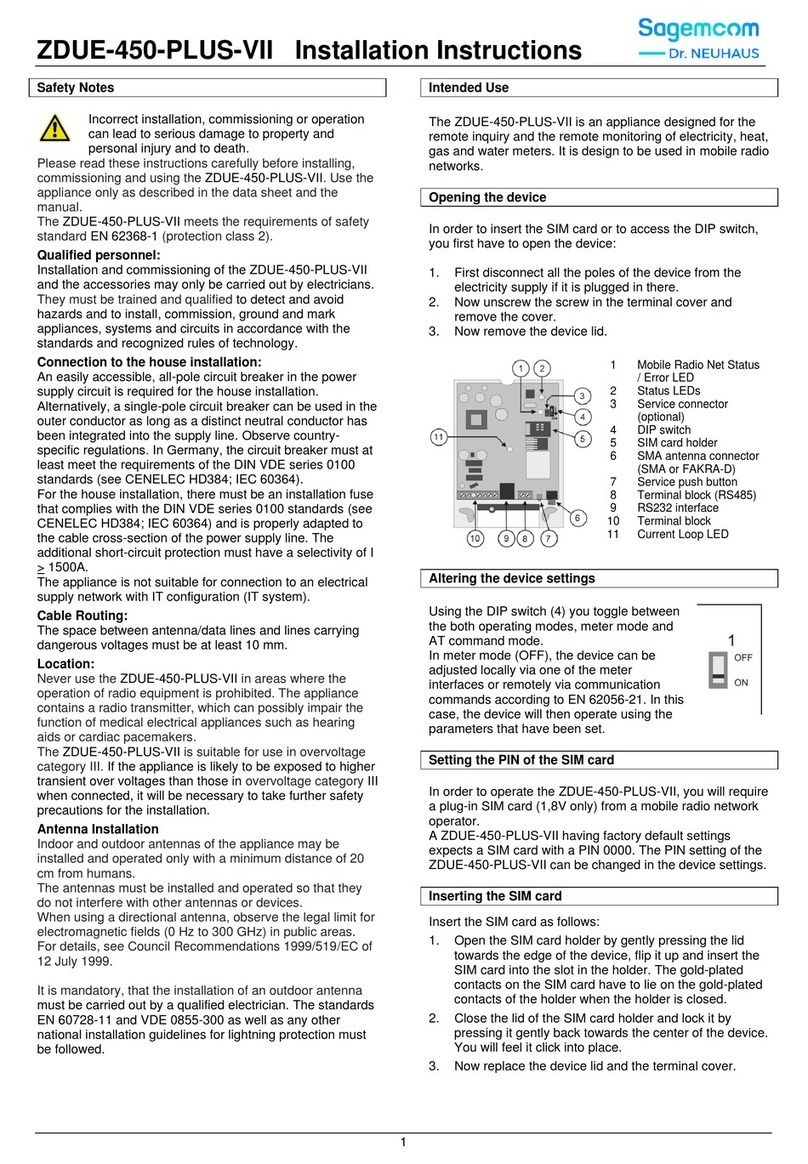
Dr. Neuhaus
Dr. Neuhaus Sagemcom ZDUE-450-PLUS-VII installation instructions
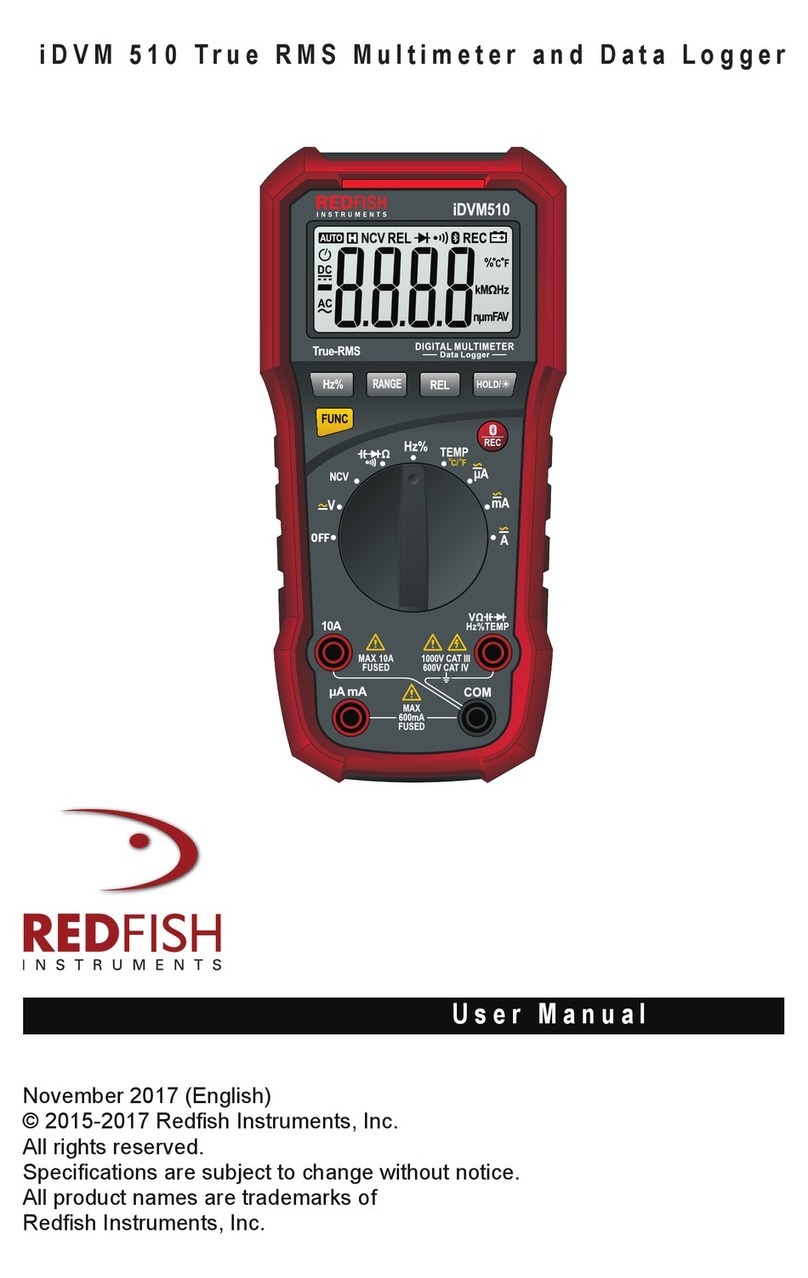
Redfish
Redfish iDVM 510 user manual
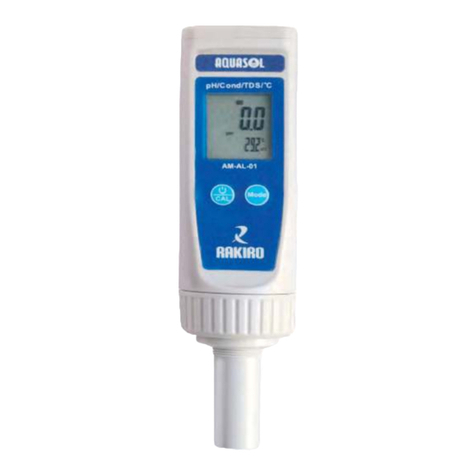
RAKIRO
RAKIRO AQUASOL AM-AL-01 user guide
